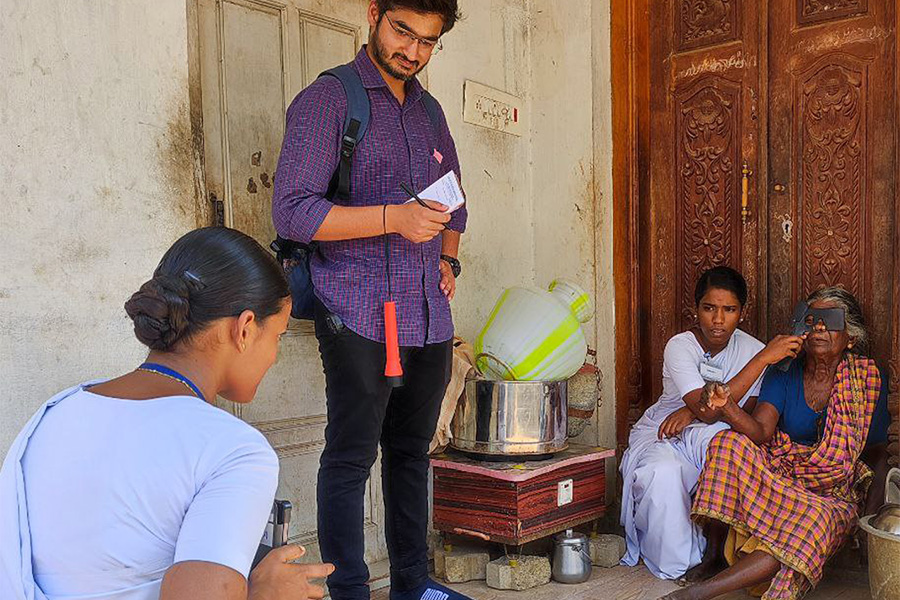RAAB7 Prevalence Survey in Sivaganga District

Aravind-Madurai, 01 March 2024 – 30 April 2024
The survey conducted by Aravind-Madurai in Sivaganga district focused on the prevalence of cataracts, refractive errors, and service uptake. The main objectives were to test the Rapid Assessment of Avoidable Blindness (RAAB7) method in the Indian population, specifically in Tamil Nadu, and to validate the feasibility of incorporating near-vision screening into RAAB7. Developed at the International Centre for Eye Health (ICEH), London, UK, the RAAB is a rapid survey methodology designed to assess blindness and visual impairment in people aged 50 and above. The new component of the current RAAB7 included near-vision screening and an assessment of enablers and barriers to the use of near-vision eyeglasses. RAAB7 employs digital data collection along with the use of an integrated Peek Acuity Mobile Application for visual acuity measure.
Prior to starting the survey, a three-day training programme was provided to the survey team by Dr. Sandeep Buttan, a certified RAAB Trainer from Dr. Shroff Charity Eye Hospital, New Delhi. During the programme, Dr. Chandrakumar, Project Director, Tamil Nadu State Blindness Control Society, delivered a keynote address and shared insights on conducting the RAAB6 survey.
During the survey, the team examined 3,582 people aged 50 years and above from 77 different locations. The findings suggest that one-fourth of the surveyed population required some form of eye care and were referred to eye care facilities. If proven, the near vision screening could be integrated into the existing RAAB method, thereby enhancing its benefits for a broader global population.



